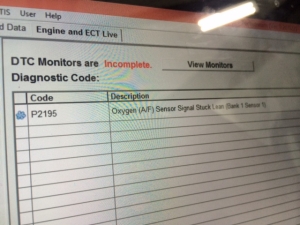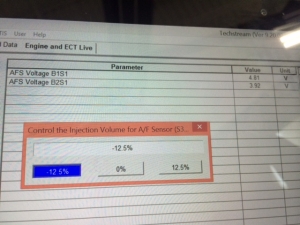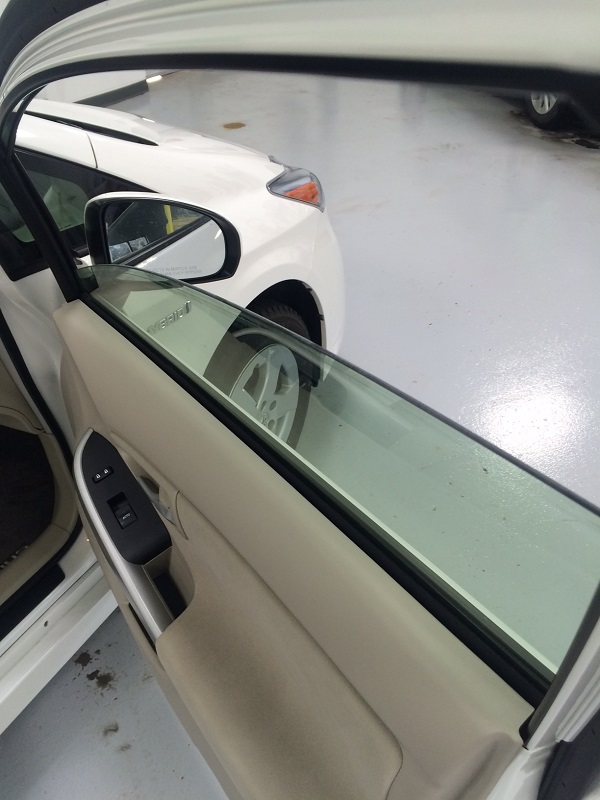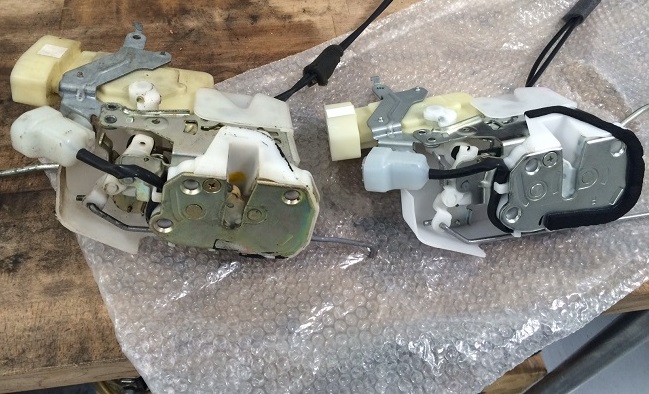The check engine light can mean many things, from a loose gas cap to complete engine failure. In this post we explore one failure in particular – an Air/Fuel ratio sensor failure.
The Air/Fuel ratio sensor detects the amount of oxygen in the exhaust gas and is used by the engine to maximize fuel economy and power. It is a more sensitive over a wider range of levels than a typical oxygen sensor.
A guest today had the following code:
P2195 – A/F signal stuck lean (bank 1 sensor 1). This is one of the more common failures of an A/F sensor – its voltage sticks at the lean (or oxygen-rich) side of it’s range. The engine’s computer is constantly monitoring the sensor for performance and abnormal behavior. In this case, it saw it, logged the code P2195, and illuminated the check engine light.
Diagnosis
If order for proper diagnosis, the technician attempts to manually duplicate the problem. By using the factory scan tool software, the technician communicates with the engine’s computer and forces the car to run a bit lean (removing 12.5% of the normal fuel load) going into the engine while manually monitoring the voltages of both the bank 1 and bank 2 A/F sensors. By doing this, the technician duplicates the condition in which the sensor was failing (reading lean) and observes the behavior of the sensors. For this test, voltages just under 4 volts are normal. Note in the following picture the topmost sensor soars past 4 volts to almost 5 (the maximum for reading a lean condition)
By doing this, the technician has both confirmed the B1S1 is reading excessively lean (especially compared to its counterpart on the other bank), is connected properly (as the sensor is sending data), and that there isn’t an whole-engine lean condition (as both sensors are reading differently given the same -12.5% command). The B1S1 sensor is condemned, replaced and the vehicle is returned to service.







I have a 2004 Toyota Celica Gts 1.8 engine, i bought this car used with a p0171 code, so i replaced teh o2 sensor before the catalytic converter, i replaced the mass air flow sensor, cleaned out the throttle body, changed all air hoses, but now getting a p0171 code still, a p2195 and now a p0420 code, i know there isnt anything wrong wit the catalytic converter, so what could cause these codes?
Give this a read, it also applies to the Celica: http://carspecmn.com/toyota-corolla-and-matrix-p0171-in-cold-temperatures/
I think that will fix your P2195 as well, but the P0420 is unrelated.